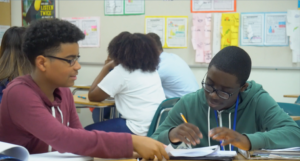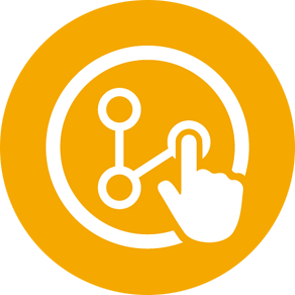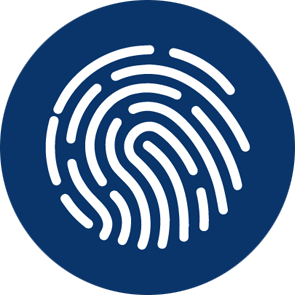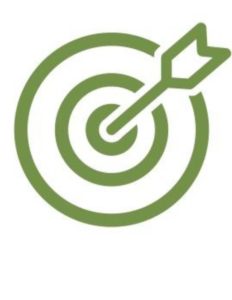Goal Achievement
Goal Achievement
Substantial research demonstrates that goal achievement skills, including both the setting of goals and monitoring progress towards them, contribute to:
- Improved student outcomes
- Build motivation to engage in learning tasks
- Develop cognitive skills to self-regulate behavior (Locke and Latham, 2006)
This is characterized as “working harder” and “working smarter.” Overall, the research indicates that goal-achievement skills play a critical role in integrating the academic and social-emotional aspects of learning.
Substantial research indicates that explicit training around goals can improve the types of goals students set and their ability to make progress on those goals (Barron and Harackiewicz, 2001). The following are two examples:
- A longitudinal study of goal-setting in 23 high schools found that involving students in setting short and long-term learning goals and tracking their progress led to improved academic performance in language arts (Moeller, Theiler, and Wu, 2012).
- Another study showed that 11thgrade students in a vocational education course exhibited more self-regulatory behaviors after engaging in a program designed to teach them how to set goals, develop a plan to achieve that goal, evaluate goal attainment, and adjust (Chang and colleagues, 2018).
In short, many school-based interventions that involve students in setting goals and monitoring progress towards those goals are associated with improved self-regulation behaviors, academic performance, attendance, and behavior (Duckworth and colleagues, 2013).
How Do Goal Achievement Interventions Work?
Research on goal achievement interventions identifies three important features that support positive outcomes:
- Setting mastery or learning goals;
- Visualizing obstacles and ways to overcome them;
- Providing opportunities for monitoring goal progress.
Mastery Goals
Goal theory highlights the importance of goal orientation, of which there are two major types (Covington, 2000): Performance and Mastery Goals. Performance goals are focused on external indicators of achievement, while mastery goals focus on the content of what is being learned.
- A study of secondary school students found that students who set goals oriented towards mastery expended more effort, made more progress on their goal, and were more successful on college entrance exams (Vasalampi and colleagues, 2012).
- Another study of high school students found that a mastery goal orientation led to greater classroom engagement, higher achievement, and more psychological satisfaction than performance goal orientation (Reeve and Lee, 2014).
Mastery goals push students to “work smarter,” shaping student cognitive processes (Covington, 2000).
Visualizing Obstacles
A second important component of goal achievement interventions is the importance of having students visualize potential obstacles and develop plans to overcome them (Oettingen and Cachia, 2016). The power of goal-setting comes not from wishful thinking around the big dreams that students have, but from connecting their dreams to the steps needed to attain those dreams, the likely obstacles they will encounter, and potential strategies to overcome those obstacles.
Monitoring Goal Progress
Goal-setting theory poses that monitoring goals and adjusting for success in important for higher achievement (Zimmerman and Schunk, 2008).
Ex. SMART-ER Goals
- Specific, Measurable, Achievable, Relevant, and Time bound
- Goal-setting theory emphasizes the need for SMART-ER goals, which includes the ability to Evaluate progress and Revise plans to achieve goals. Helpful information on goal progress can come multiple sources, and not just self-monitoring. Indeed, feedback from external sources, including peers, supports positive outcomes with goal-achievement interventions (Locke and Latham, 2006).
Setting goals: Give students a framework to understand goal achievement and identify personal goals.
Understanding Mastery Goals: Help students understand the difference between mastery goals and performance goals.
Monitoring goal progress: Best Practices in Monitoring Goals for Academic or Emotional Skill Improvement
Have a suggestion for the PASL Toolkit? Add it here.
Additional research
Barron, K. E., & Harackiewicz, J. M. (2001). Achievement goals and optimal motivation: testing multiple goal models. Journal of Personality and Social Psychology, 80(5), 706. https://www.researchgate.net/profile/Kenneth_Barron2/publication/280628012_Achievement_goals_and_optimal_motivation_Testing_multiple_goal_models/links/55c0421408aec0e5f4477384.pdf
Chang, C.-C., Liang, C., Chou, P.-N., & Liao, Y.-M. (2018). Using e-portfolio for learning goal setting to facilitate self-regulated learning of high school students. Behaviour & Information Technology, 0(0), 1–15.
Covington, M. V. (2000). Goal theory, motivation, and school achievement: an integrative review. Annual Review of Psychology, 51, 171-200. https://www.annualreviews.org/doi/full/10.1146/annurev.psych.51.1.171
Duckworth, A. L., Grant, H., Loew, B., Oettingen, G., & Gollwitzer, P. M. (2011). Self-regulation strategies improve self-discipline in adolescents: Benefits of mental contrasting and implementation intentions. Educational Psychology, 31(1), 17–26.
Farrington, C., Roderick, M., Allensworth, E., Nagaoka, J., Seneca Keyes, T., Johnson, D., & Beechum, N. (2012). Teaching Adolescents to Become Learners: The Role of Noncognitive Factors in Shaping School Performance: A Critical Literature Review. Chicago: The University of Chicago Consortium on Chicago School Research. https://kops.uni-konstanz.de/bitstream/handle/123456789/17105/gollwitzer_strategies.pdf?sequence=2
Locke, E. A., & Latham, G. P. (2006). New Directions in Goal-Setting Theory. Current Directions in Psychological Science, 15(5), 265–268. https://journals.sagepub.com/doi/full/10.1111/j.1467-8721.2006.00449.x
Moeller, A. J., Theiler, J. M., & Wu, C. (2012). Goal setting and student achievement: A longitudinal study. The Modern Language Journal, 96(2), 153–169. https://onlinelibrary.wiley.com/doi/pdf/10.1111/j.1540-4781.2011.01231.x
Oettingen, G., & Cachia, J. Y. A. (2016). Problems with positive thinking and how to overcome them. In K. D. Vohs & R. F. Baumeister (Eds.), Handbook of self-regulation: Research, theory, and applications (3rd ed., pp. 547–570). New York: Guilford Press.
Reeve, J., & Lee, W. (2014). Students’ classroom engagement produces longitudinal changes in classroom motivation. Journal of Educational Psychology, 106(2), 527. https://bmri.korea.ac.kr/file/board_data/publications/1414975476_1.pdf
Vasalampi, K., Nurmi, J.-E., Jokisaari, M., & Salmela-Aro, K. (2012). The role of goal-related autonomous motivation, effort and progress in the transition to university. European Journal of Psychology of Education, 27(4), 591–604. https://link.springer.com/article/10.1007/s10212-011-0098-x
Zimmerman, B. J., & Schunk, D. H. (2008). Motivation: An Essential Dimension of Self-Regulated Learning. In D. H. Schunk & B. J. Zimmerman (Eds.), Motivation and Self-Regulated Learning: Theory, Research, and Applications. New York: Lawrence Erlbaum Associates.





